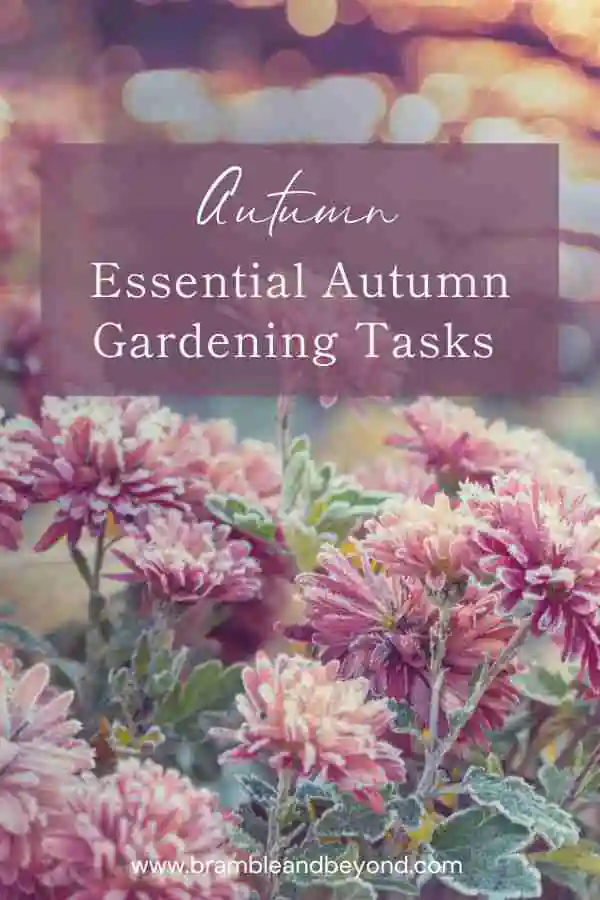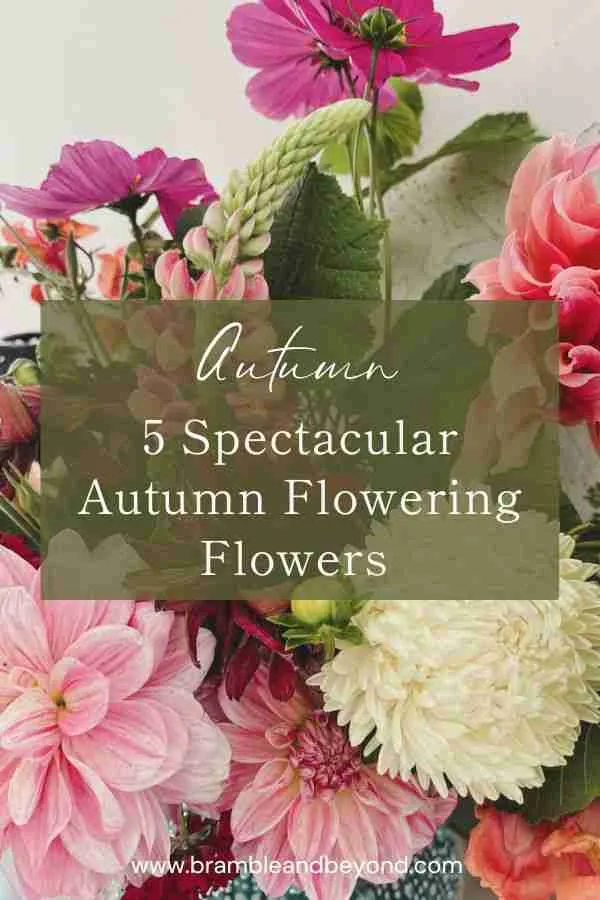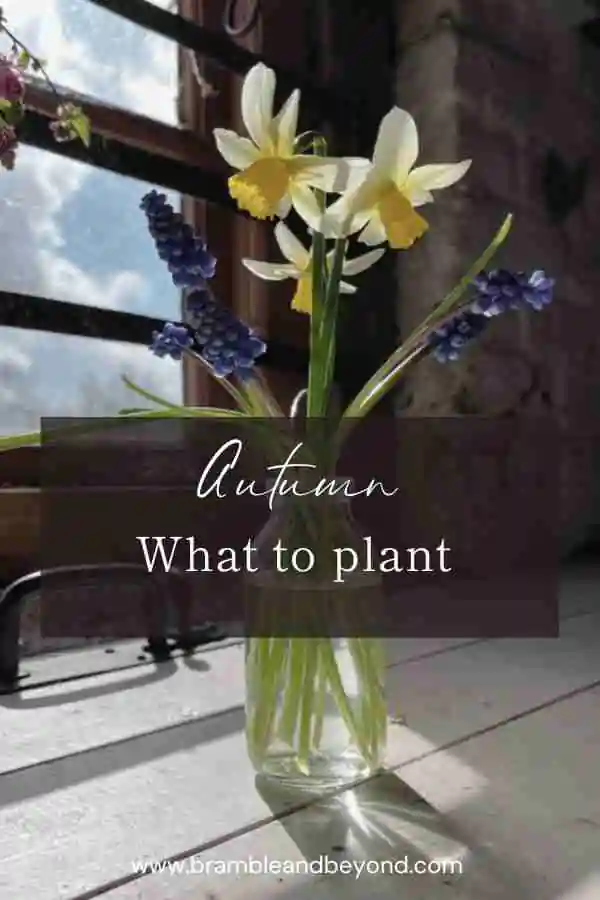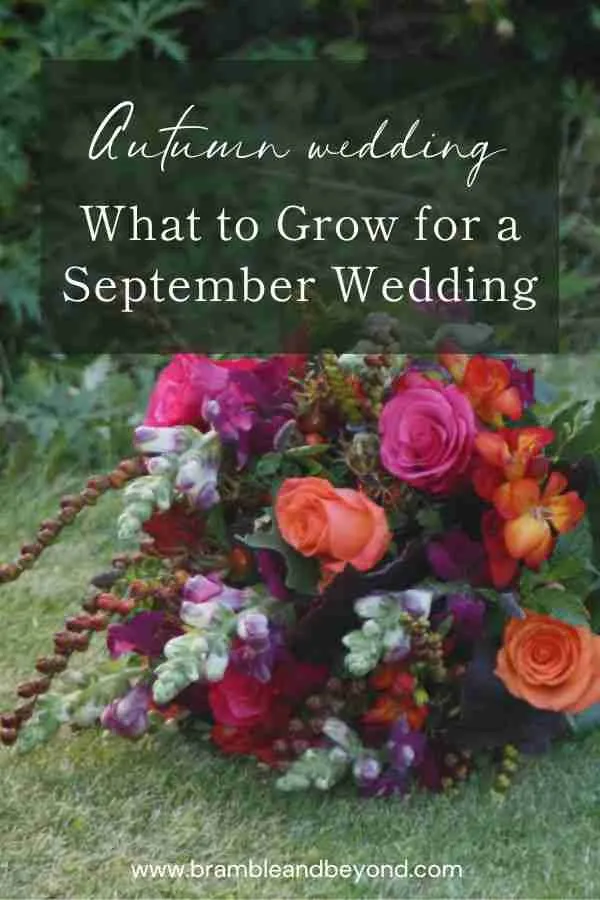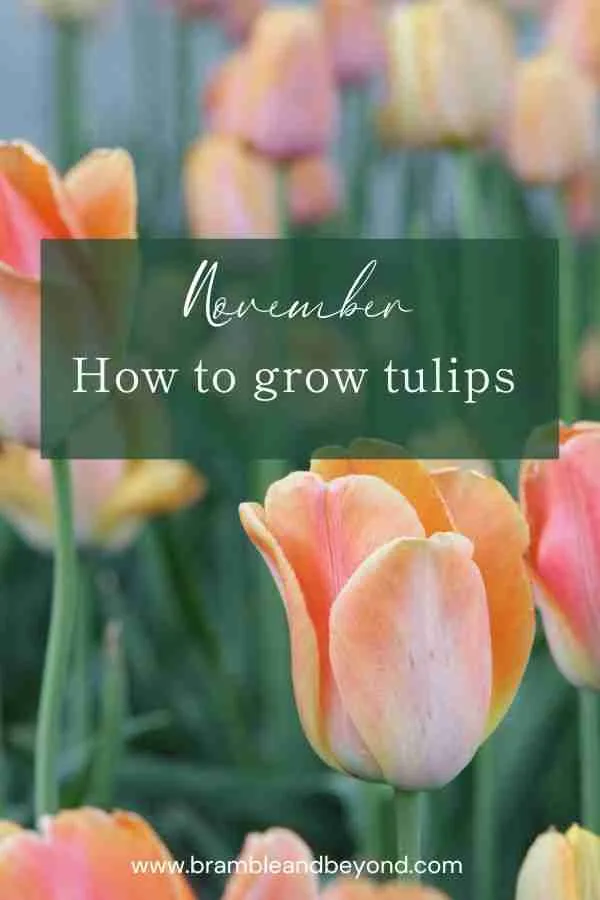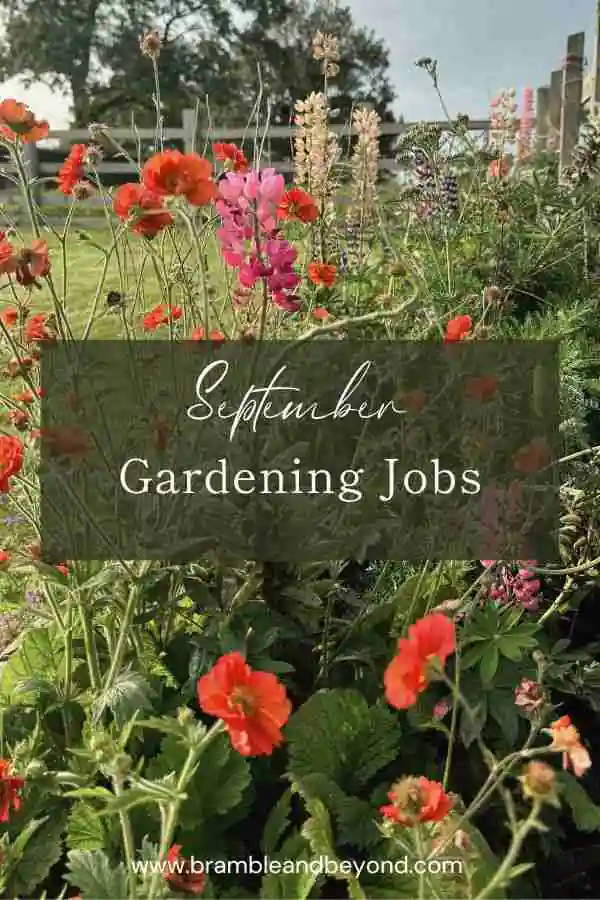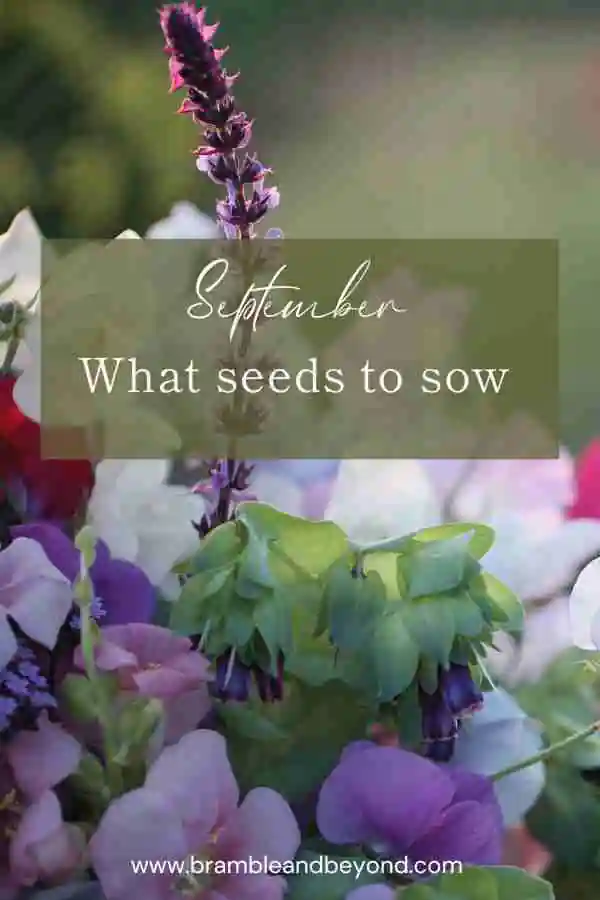Disclosure: This post may contain affiliate links, meaning I get commission if you decide to make a purchase through my links, at no cost to you. Please read my Affiliate Disclosure for more information.
With the changing leaves and the chill in the air, autumn is upon us. It’s a time of transition, of moving from the vibrancy of summer to the quiet dormancy of winter. This is particularly true for your flower garden, which now requires some essential autumn gardening tasks to ensure its sustainability.
Embracing autumn in your flower garden isn’t just about raking up leaves or enjoying the last of the summer blooms. It’s about preparing for the next season and making sure your garden is healthy and sustainable. Autumn is a time of reaping what you have sown, but in the flower world you can also have the chance of sowing what you will reap next year.
Whether you’re a seasoned gardener or a newbie, autumn is a time to roll up your sleeves and get stuck in. So what exactly should you be doing in your flower garden this autumn?
Timing autumn gardening tasks
The autumn gardening tasks you undertake are the foundation of a healthy, sustainable flower garden. They ensure a smooth transition from the bright blooms of summer to the restful dormancy of winter.
As with all things, to ensure maximum productivity of you flower garden, then timing is key. Autumn is a busy time in the garden but you can take your time, or at least until the frost allows anyway.
The tasks detailed later in this article are categorised as early, mid and late autumn. In reality, this is based on your climate and weather conditions. Some jobs need to be done while the soil is still warm from the summer sun, whilst others can be left until after the first frost. So, I’ll leave you to decide when is best for you. Typically, in the UK, this could simply be split into tasks for September, October and November.
Environmentally friendly methods for autumn gardening
As gardeners, we have a responsibility to garden in a way that respects and supports nature in all its forms. While it is important to clear your garden to prevent disease, I believe it is also important to leave food and shelter for any overwintering creatures that pass through your garden.
Much to Mr B+B’s annoyance, our garden does not look pretty over winter. I leave a lot of plant debris in the ground to die back naturally. Whilst there is probably not enough to create a good mulch cover, there is enough to provide a bit of food and shelter. Or at least that is what I tell myself, it could of course be because I don’t want to do much gardening in the cold.
Your soil, and its health, are the cornerstone of your productive flower garden and a good soil structure is obtained by minimal soil disturbance, as proven by the no dig method. Leaving plant roots in the ground to decay naturally all adds to the soil’s ability to grow microorganisms which support new plant growth.
You may be surprised to find that roots left in the ground overwinter are non existent by spring. This is a good sign of a healthy soil structure.
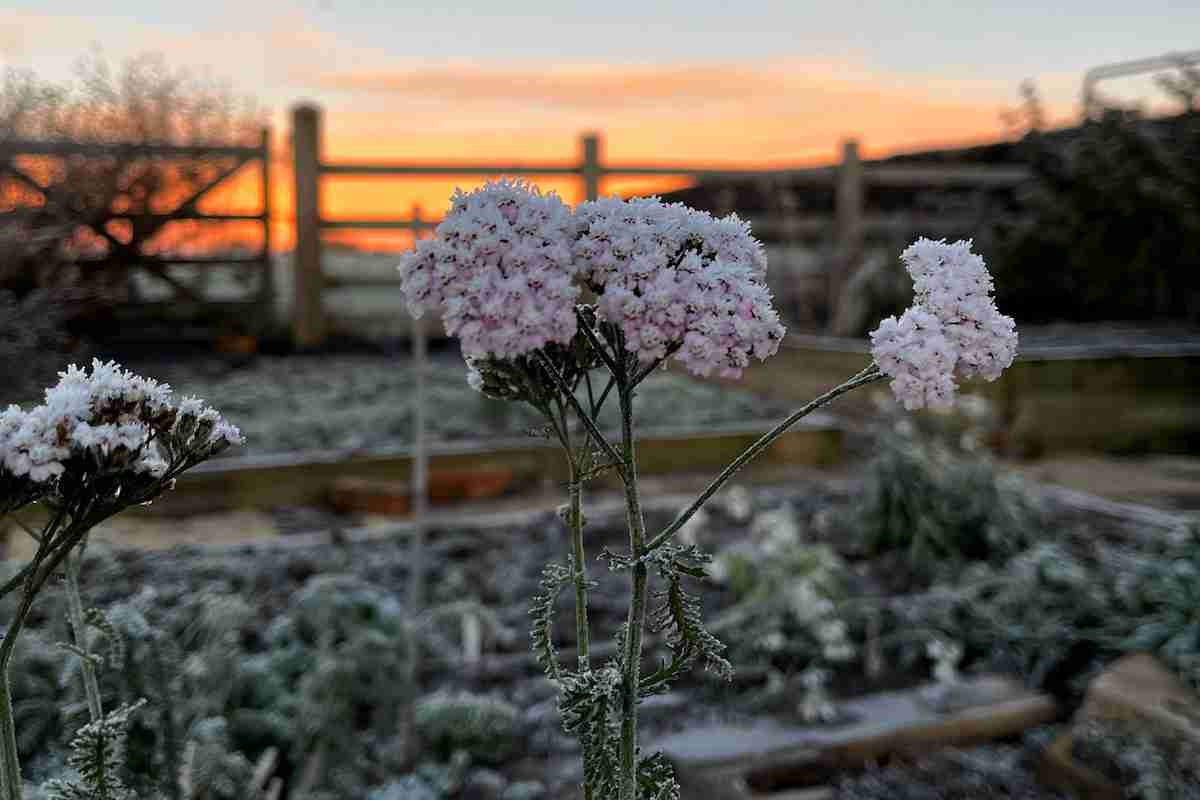
Maintaining a sustainable garden year-round
Undertaking autumn tasks can have a profound impact on the sustainability and vitality of your garden throughout the entire year. Activities such as mulching, composting, and soil maintenance become easier in the autumn season, mainly because the flower beds are relatively empty, providing you with a clear and unobstructed working space.
Devoting adequate time to lay down mulch or plant a cover crop will enrich the soil, infusing it with essential nutrients and preparing it for the upcoming spring season. This process of nurturing and feeding the soil will ensure that it is primed and ready for the growth that spring will usher in.
Any tasks or processes that you can complete now, during the autumn season, will not only see you through the rest of the year but will also contribute significantly to maintaining a healthy, sustainable garden.
This proactive approach to garden care can make a world of difference, transforming your garden into a thriving, vibrant space that benefits not just you, but the local ecosystem as well. The work you put in now will undeniably pay dividends in the form of a lush, flourishing garden all year round.

Early autumn gardening tasks
As we enter autumn, the tasks in your flower garden shift to maintenance mode. This is the time to finish harvesting and start seeds for next spring. Here are some tasks you should consider:
- Sow hardy annuals: This is your last opportunity to sow hardy annuals early for next spring. Autumn sown hardy annuals generally flower earlier and produce more robust plants. If you want to buy the best seed for hardy annual cut flowers, I sell them in my seed shop.
- Plant out biennials: It’s also the time to plant out the biennials you started in early June. Biennials are plants that take two years to grow from seed to fruition and die. Planting them in their final position during this time ensures that they will bloom next year.
- Collect seeds: This not only helps to perpetuate your favourite plants but also saves money as you do not need to buy new seeds for the next planting season. Although, I’ll caveat that some hybrid flower seeds may not come back the same if you have multiple varieties of the plant near each other.
- Hang and dry flowers: Don’t forget to hang and dry flowers for winter arrangements. This will be your last opportunity to make the most of your flowers. Dried flowers can be used for indoor decorations, creating a rustic and vintage vibe in the house.
- Plant out hardy annuals: If you started your hardy annual seeds in August, then you should get the opportunity to plant them out while the ground is still warm. Usually they need to be planted out by the autumn equinox.
Mid Autumn gardening tasks
As we transition into mid-autumn, it’s a crucial time to organise and maximise the usage of the remaining warm weather in order to prepare your garden for the upcoming seasons. Here are some tasks you might want to consider completing before it gets too cold:
- Take hardwood cuttings: Hardwood cuttings provide an easy and reliable method of propagating a range of deciduous climbers, trees and shrubs. Mid-autumn presents a perfect time for this activity. The cuttings can generally be forgotten about until the following year, as the cut surface undergoes a period of callusing over the winter from which roots will develop in the spring.
- Plant narcissi & alliums: Mid autumn is the perfect window to plant narcissi and alliums. The bulbs need warm soil to grow roots before the cold hits. They’ll lie dormant over winter, ready to bring a burst of colour to your garden in the spring.
- Plant out perennials: Mid autumn is also an ideal time to start splitting and planting perennials. These plants are not only hardy, so can withstand the cold weather. They will also need less watering over the winter months, as opposed to planting them in spring or summer.
- Create compost: Composting is a key aspect of sustainable gardening, reducing waste and providing a nutrient-rich supplement to your garden. If you have been adding to the compost for a while it may well be ready to be used. Sift through your compost to get a pile of usable compost ready to mulch your flower beds. This will also make sure your compost heap is ready to receive more organic waste as you clear out your beds.
- Clear flower beds and mulch: It’s time to remove spent flowers from your flower beds and apply a thin layer of mulch or compost. This will act as an insulating barrier for the soil, keeping it warm, and it will also suppress the growth of weeds. This prepares your garden for the impending colder months, ensuring it stays healthy and fertile. Try to leave some seed heads as they not only serve as a food source for wildlife but can also add an element of interest to your garden during the barren winter months.
Late autumn gardening tasks
As we enter the later stages of autumn, the tasks in your flower garden shift again. This is the time to start preparing your garden for the colder months ahead and ensuring plants are ready to bloom again come spring. Here are some tasks you should consider:
- Lift or mulch dahlias: Dahlias are not frost-hardy, and if left in the ground over winter, they can either rot, if the ground is too wet, or die because they get too cold. If your garden is in a colder region, consider lifting your dahlia tubers and storing them in a cool, dry place over the winter. If you’re in a milder area, you might get away with heavily mulching them to provide some extra protection. This is usually done after the first frosts of the season.
- Plant tulips: Late autumn is the perfect time to plant tulip bulbs. They need a period of cold to trigger the process that causes them to flower in the spring. Plant them deep—about three times the height of the bulb—and they’ll reward you with a beautiful display in the spring. This is usually done after the first frosts of the season.
- Order and plant bare-rooted perennials and roses: Bare-root plants are sold without any soil around their roots, and they’re usually available from late autumn through to spring. They’re a cost-effective way of buying plants, and autumn is a good time to plant them. They’ll have a chance to establish their roots in the soil before the ground becomes too hard or waterlogged.
- Pot up forced bulbs for Christmas: If you want to enjoy some festive flowers, pot up some bulbs for forcing. This is a process where you trick the bulbs into thinking it’s spring so that they flower early. Hyacinths, narcissi and amaryllis are popular choices for forcing.
- Store dried flowers and seeds: If you’ve been drying flowers or collecting seeds, now is the time to ensure they’re correctly stored for the winter. Keep them in a cool, dry, rodent free place and they’ll be ready for use whenever you need them.
Embracing these autumn gardening tasks will help ensure that your flower garden is sustainable and ready to burst into life once the warmer weather returns.
As the famous environmentalist Rachel Carson once said,
“In nature, nothing exists alone.” Rachel Carson
Embracing autumn in your flower garden is about more than just tasks and chores. It’s about becoming a part of the larger ecosystem, contributing to its health and sustainability. By undertaking these autumn gardening tasks, you’re not just maintaining a garden. You’re nurturing a slice of our planet, one compost heap and seed sowing at a time.

